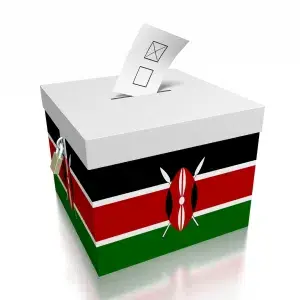 It is not the first time Kenyan elections have made headlines, following the historic days of the strong rule of President Jomo Kenyatta at Independence in 1964, when the election had divided the people ethnically into parties between Kenyatta’s Kikuyu-dominated Kanu Party and the Luo. In 1969 one-party rule followed, with Kanu winning every election until 1988, beyond Kenyatta’s death in 1978. Multi-parties were restored in 1992.
It is not the first time Kenyan elections have made headlines, following the historic days of the strong rule of President Jomo Kenyatta at Independence in 1964, when the election had divided the people ethnically into parties between Kenyatta’s Kikuyu-dominated Kanu Party and the Luo. In 1969 one-party rule followed, with Kanu winning every election until 1988, beyond Kenyatta’s death in 1978. Multi-parties were restored in 1992.
This time after the elections on the 9th of August, there was first impatience over the lengthy time before the results were finally announced on the 15th of August two hours after deadline, followed by chaotic scenes at the election center when these became known. Fisticuffs followed, with chairs landing on the street. The incumbent President Raila Odinga, the former hardy opposition leader was unseated by Deputy President William Ruto by 49.50% with his Kenya First coalition, winning the majority of seats. Even before the results were known, these were disputed by four officials of the electoral commission, including the body’s vice-chairperson.
None of this stopped Ruto’s supporters from celebrating in the streets of Eldoret, Ruto’s hometown, while in Kisumu, Odinga’s stronghold, protests erupted, with his vice-chairman saying ‘it isn’t over till it is over.
Rutinga’s denouncement of political dynasties and people’s approach had made him popular, as well as his rise since the humble days as a seller of chickens. He promised that he would run a transparent democratic government and ensure together with his team, that sacrifices made by many Kenyans would not be in vain.
Incidentally: Eldoret has an unusual colonial past. Situated in western Kenya on the Uasin Gishu Plateau of the Great Rift Valley, it had attracted European settlers in the colonial era. It was the goal of a group of Afrikaners, anxious to leave South Africa in the post-years of the Afrikaners’ defeat in the Anglo-Boer War ending 1902. In August 1908, 58 families of displaced Afrikaners headed from Mombasa for this spot by sea and by rail. They traveled in ox-wagons, as had their forefathers at the time of their Great Trek out of the Cape into the interior during the 19th century. In 1911 they were followed by a further 60 Afrikaner families. This divided the city into two groups, British and Afrikaner, each with their own facilities, including schools. After the Mau Mau rebellion and fear of independence, Afrikaners began to return home in the 1950s and 1960s, so that by 1987 only two households had remained.
